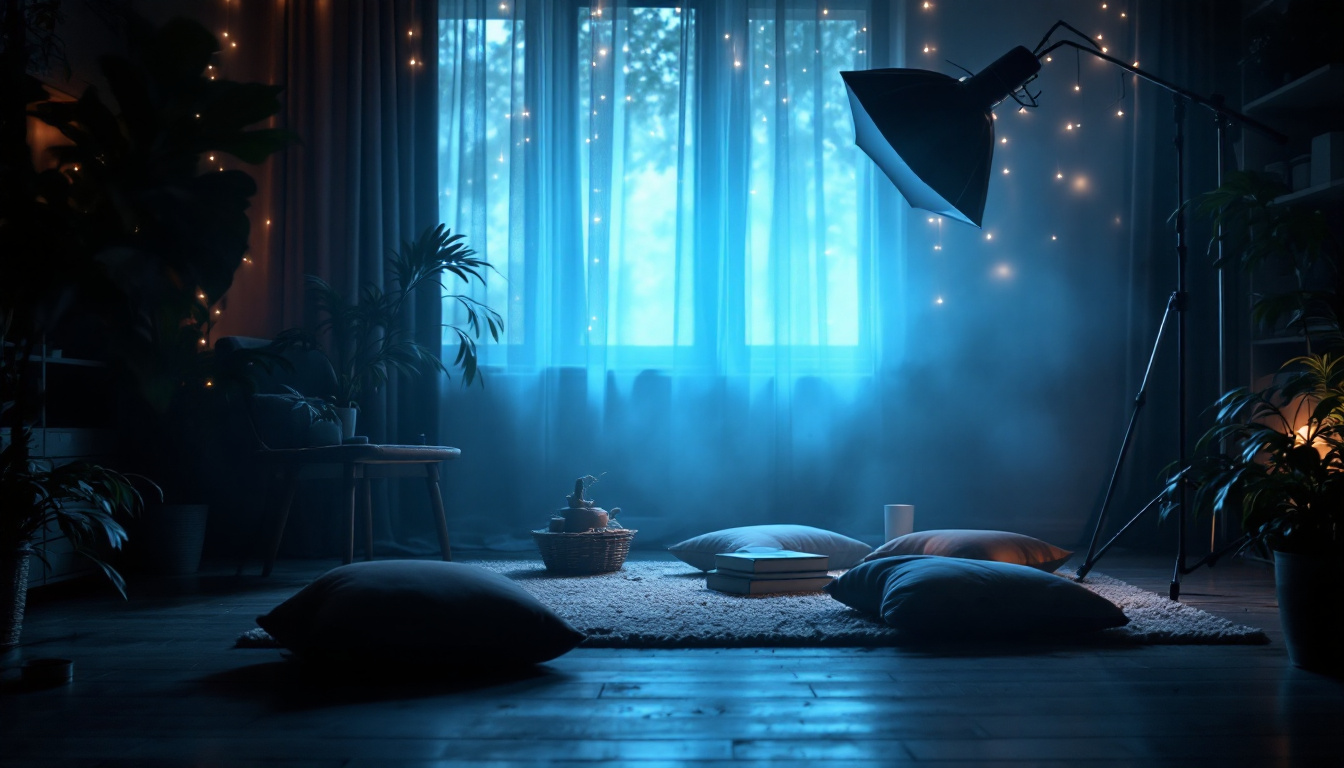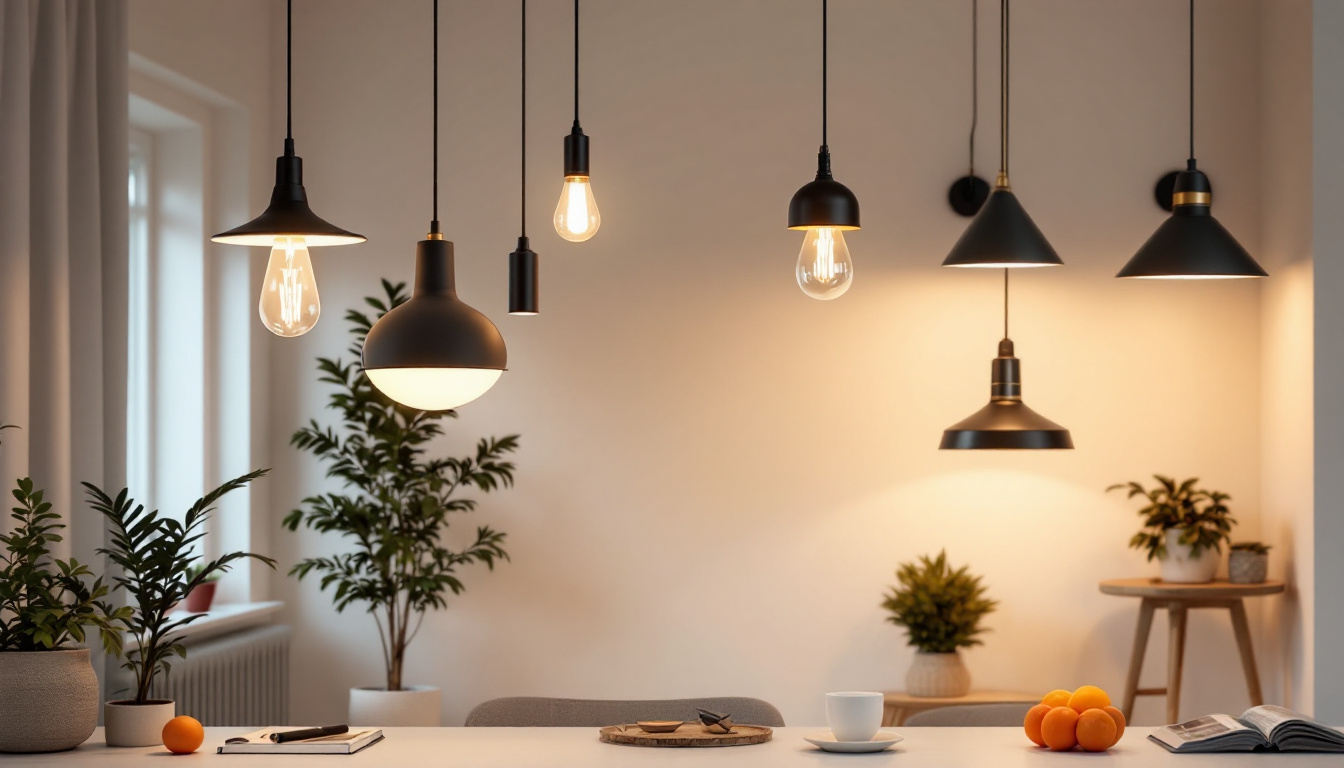
As the film industry continues to evolve, the importance of lighting in storytelling becomes increasingly apparent. Ambient lighting plays a crucial role in setting the mood, enhancing the narrative, and guiding audience emotions. For lighting contractors, understanding how ambient lighting is used in various films can provide valuable insights into design choices and techniques that can be applied to their projects. This guide explores notable films that exemplify the use of ambient lighting, offering inspiration and practical knowledge for lighting professionals.
Ambient lighting refers to the general illumination that fills a space, creating a base layer of light that allows for visibility without harsh shadows. Unlike direct lighting, which can create dramatic effects, ambient lighting is softer and more diffused, contributing to the overall atmosphere of a scene. This type of lighting can be achieved through various means, including natural light, overhead fixtures, and strategically placed lamps. The careful consideration of ambient lighting can transform a mundane environment into a welcoming haven, making it an essential element in both residential and commercial design.
In film, ambient lighting is essential for establishing the tone and context of a scene. It can evoke feelings of warmth, intimacy, or even melancholy, depending on the color temperature and intensity. For lighting contractors, mastering the nuances of ambient lighting can enhance their ability to create spaces that resonate emotionally with viewers. The subtle interplay of light and shadow can guide the audience’s attention, subtly influencing their perception of the narrative and the characters within it.
Color temperature plays a significant role in ambient lighting. Measured in Kelvin, it affects how colors appear on screen and can influence the emotional response of the audience. Warmer tones, typically between 2700K and 3000K, create a cozy, inviting atmosphere, while cooler tones, ranging from 4000K to 6000K, can evoke a sense of calm or detachment. This understanding of color temperature is not only crucial for filmmakers but also for interior designers who wish to create specific moods within a space.
Lighting contractors should consider the psychological effects of color temperature when designing spaces. For instance, a warm ambiance may be ideal for residential settings, while cooler tones might be more appropriate for commercial spaces or modern designs. Understanding these subtleties can lead to more effective lighting solutions that align with the intended mood of a project. Additionally, the integration of smart lighting technology allows for dynamic adjustments to color temperature, enabling spaces to adapt to different activities and times of day, further enhancing the user experience.
Several techniques can be employed to achieve effective ambient lighting in film. Softboxes, diffusers, and bounce lighting are commonly used to create a gentle, even wash of light. Additionally, practical lights—such as lamps and sconces—can contribute to the overall ambient effect while adding depth and interest to a scene. The strategic placement of these light sources can help to eliminate unwanted shadows and create a more cohesive visual narrative.
Lighting contractors can draw inspiration from these techniques to enhance their designs. By incorporating various light sources and employing diffusing materials, they can create layered lighting that adds dimension and warmth to any space. Furthermore, the use of dimmers and adjustable fixtures allows for versatility, enabling spaces to transition from bright, energizing environments to soft, relaxing atmospheres with ease. This adaptability is particularly valuable in multi-functional spaces, where the lighting needs can change throughout the day or for different events, ensuring that the ambiance remains perfectly suited to the occasion.
Many films have successfully utilized ambient lighting to enhance storytelling. Below are some notable examples that showcase different approaches to ambient lighting, offering valuable lessons for lighting contractors.
Directed by Alejandro González Iñárritu, “The Revenant” is renowned for its stunning cinematography and immersive lighting. The film predominantly relies on natural light, creating a raw and authentic atmosphere. The ambient lighting in the film is characterized by its soft, diffused quality, which adds to the sense of realism and intensity.
For lighting contractors, “The Revenant” serves as a powerful reminder of the impact of natural light. Utilizing daylight effectively can enhance the authenticity of a space, making it feel more connected to the environment. This film also highlights the importance of planning and timing, as the right ambient light can drastically change the mood of a scene. The filmmakers often shot during the golden hour, when the sun is low on the horizon, resulting in warm, flattering light that adds depth to the landscape and characters alike. This technique not only elevates the visual storytelling but also emphasizes the emotional journey of the protagonist, making it a critical lesson in the power of timing and natural elements in lighting design.
“Moonlight,” directed by Barry Jenkins, is another film that masterfully employs ambient lighting to convey emotion and intimacy. The film’s use of color and light creates a dreamlike quality, enhancing the narrative’s exploration of identity and connection. The ambient lighting often features deep blues and warm yellows, evoking a sense of nostalgia and longing.
Lighting contractors can learn from the strategic use of color in “Moonlight.” By incorporating colored lighting and carefully selecting fixtures, they can create environments that resonate with specific emotions. This approach can be particularly effective in residential projects, where creating a personal and intimate atmosphere is essential. The film’s lighting design is not just about illumination but also about creating a visual language that speaks to the characters’ inner lives. The interplay of shadows and light can evoke feelings of isolation or warmth, demonstrating how nuanced lighting can transform a space into a narrative canvas that reflects the emotional states of its inhabitants.
Spike Jonze’s “Her” presents a unique vision of the future, where ambient lighting plays a crucial role in establishing the film’s aesthetic. The use of soft, warm colors throughout the film creates a sense of comfort and familiarity, contrasting with the themes of loneliness and disconnection. The ambient light often appears to emanate from within the characters’ environments, enhancing the emotional depth of the narrative.
This film illustrates the importance of integrating ambient lighting with the overall design of a space. For lighting contractors, “Her” serves as a case study in how lighting can be used not just for visibility but as a design element that enhances the viewer’s experience. By considering how light interacts with colors and materials, contractors can create more cohesive and engaging environments. The film also showcases the potential of technology in lighting design, as the futuristic setting allows for innovative lighting solutions that can adapt to the characters’ moods and actions. This adaptability can inspire contractors to explore smart lighting systems that provide both functionality and emotional resonance, creating spaces that evolve with their users.
Understanding how ambient lighting is used in film can provide valuable insights for lighting contractors. By analyzing the techniques and approaches employed by filmmakers, contractors can enhance their own designs and create spaces that evoke specific emotions and atmospheres.
One of the primary lessons from the films discussed is the ability of ambient lighting to create mood. Lighting contractors should consider the emotional intent of a space when designing lighting schemes. For example, a warm, inviting atmosphere may be ideal for a restaurant or café, while a cooler, more clinical ambiance might be suitable for a medical facility.
Incorporating dimmable fixtures and adjustable color temperatures can also enhance the versatility of a space. This flexibility allows for the creation of different moods throughout the day or for various events, making spaces more functional and appealing to users.
Another key takeaway is the importance of layering light to create depth and interest. Ambient lighting should not exist in isolation; it should be complemented by task and accent lighting to achieve a well-balanced design. This layered approach can enhance the visual appeal of a space while ensuring that it remains functional.
Lighting contractors can achieve this by strategically placing fixtures to highlight architectural features or artwork while maintaining a consistent ambient glow. This technique not only adds visual interest but also enhances the overall user experience by providing adequate illumination for various activities.
Advancements in lighting technology have made it easier than ever to control ambient lighting. Smart lighting systems allow for precise adjustments to color temperature, intensity, and even the timing of lighting changes. This level of control can help lighting contractors create dynamic environments that respond to the needs of the users.
Incorporating smart technology into designs can also enhance energy efficiency, making spaces more sustainable. By using systems that allow for automated adjustments based on occupancy or time of day, contractors can create environments that are not only aesthetically pleasing but also environmentally responsible.
Ambient lighting is a powerful tool in the arsenal of lighting contractors. By studying films that effectively utilize ambient lighting, contractors can gain valuable insights into the emotional and aesthetic potential of light. The examples discussed in this guide demonstrate the diverse ways in which ambient lighting can enhance storytelling and create immersive experiences.
As the industry continues to evolve, staying informed about trends and techniques in ambient lighting will be essential for lighting contractors. By embracing the lessons learned from cinema, contractors can elevate their designs, creating spaces that resonate with users on a deeper level. Whether designing a residential home, a commercial space, or an artistic installation, the thoughtful application of ambient lighting can transform any environment into a captivating experience.
Ready to bring the art of ambient lighting into your next project? At LumenWholesale, we provide lighting contractors with the highest quality, spec-grade lighting products at prices that can’t be beaten. Our extensive selection is tailored to meet the most rigorous industry standards, ensuring that every space you illuminate is not only aesthetically pleasing but also built to last. Say goodbye to middlemen and inflated costs, and hello to hassle-free bulk buying with free shipping. Elevate your lighting designs with the perfect blend of quality, affordability, and convenience. Discover wholesale lighting at the best value today and transform your lighting concepts into captivating realities.

Discover the transformative impact of side wall lighting in modern lighting installations.

Discover how LED hanging light fixtures can transform your space with energy-efficient, stylish, and versatile lighting solutions.

Explore how innovative technologies are revolutionizing the lighting industry in “Flickering Light: Transforming the Way Lighting Contractors Work.” Discover the latest tools and strategies reshaping efficiency, design, and sustainability for modern lighting professionals..

Explore the ultimate guide for lighting contractors in “Dusk Till Dawn Lights,” offering expert insights on innovative lighting solutions, installation tips, and design trends to transform any space from ordinary to extraordinary..